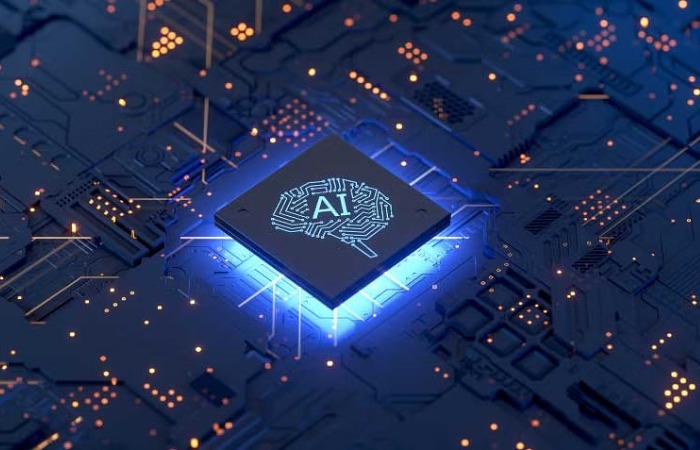Introduction
The tech sector has long struggled with a diversity in tech in Tech gap, with women, minorities and other marginalized groups significantly underrepresented.
This lack of diversity hinders innovation and perpetuates inequality in one of the most dynamic and influential fields.
As artificial intelligence (AI) increasingly becomes integral to technological advancements, the advanced artificial intelligence course presents a unique opportunity to fill this gap.
By making AI education more accessible and inclusive, these courses can train a broader range of people to access and thrive in technology roles, fostering a more diverse and innovative industry.
The Current State of Diversity in Tech

The tech industry has come a long way in recent years, but significant diversity issues remain. Women, minorities, and other marginalized groups continue to be underrepresented in technology roles, particularly in leadership positions.
For example, according to a 2023 report from the Kapor Center, women hold only 25% of IT jobs, and women of colour have even less, just 11%.
Likewise, Black and Hispanic professionals are particularly underrepresented, making up just 9% and 8% of the tech workforce, respectively.
These disparities are not just statistics; they reflect more profound systemic barriers. Socioeconomic challenges, limited access to quality education, and implicit hiring and work culture biases contribute to current underrepresentation.
This lack of diversity can stifle innovation, as diverse teams have been shown to bring varied perspectives that improve problem-solving and creativity.
Additionally, the homogeneity of the technology sector can lead to the development of products and services that do not meet the needs of a diverse user base.
The urgency of addressing these diversity challenges cannot be understated. It is essential to foster an inclusive technology environment that harnesses the full potential of your workforce and serves a broader, more representative audience.
The Growing Importance of AI in Tech Diversity in Tech

Artificial intelligence is quickly becoming the cornerstone of modern technology, driving advances in various industries such as healthcare, finance, transportation and entertainment.
AI’s capabilities to automate tasks, analyze large amounts of data, and enable innovative solutions have positioned it at the forefront of technological progress.
As companies increasingly adopt AI to improve efficiency and create new products, demand for AI-trained professionals is skyrocketing.
The World Economic Forum predicts that artificial intelligence and machine learning specialists will be among the most sought-after positions in the coming years.
The growing importance of AI means the need for comprehensive AI training. Therefore, it is essential to ensure that these learning opportunities are accessible to diverse populations to meet growing demand and promote inclusive innovation.
How AI Courses Can Bridge the Diversity in Tech Gap

AI accessibility courses, especially online ones, have democratized education, making it accessible to a broader and more diverse audience.
Several online educational platforms offer artificial intelligence courses that students can access anywhere.
This flexibility is particularly beneficial for people from underrepresented groups who may face geographic, financial, or time limitations that prevent them from attending traditional in-person classes.
Flexible Learning The structure of online AI courses allows students to study at their own pace, accommodating those with other responsibilities such as work or family.
This flexibility allows more people, including professionals and caregivers, to learn valuable AI skills without sacrificing their current commitments.
Scholarships and Financial Aid Many online learning platforms and educational institutions offer scholarships and financial aid explicitly targeted at underrepresented groups.
These financial incentives can significantly reduce economic barriers to accessing high-quality AI training, allowing more people to pursue careers in technology.
Inclusive Curriculum Some AI courses are designed with an inclusive curriculum that incorporates diverse perspectives and real-world applications relevant to diverse communities.
This approach enriches the learning experience and helps students understand the broader impact of
AI technology on different populations, encouraging them to apply their skills in diverse and meaningful ways.
Partnerships and Outreach Educational institutions and technology companies are increasingly partnering to expand the reach of AI education to underrepresented communities.
These partnerships often involve outreach programs, workshops, and targeted recruiting efforts to attract a more diverse student body.
AI courses can help create a more inclusive tech talent pipeline by actively engaging with these communities.
Challenges and Areas for Improvement

Despite the progress in promoting diversity through artificial intelligence courses,
several challenges must be addressed to ensure broader and more effective inclusion.
Ongoing Barriers:
Socioeconomic factors: Many underrepresented people face financial constraints that make it difficult to access high-quality AI training. Even with scholarships and financial aid, other costs, such as internet access, devices, and study materials, can be prohibitive.
Implicit bias: Implicit bias within educational institutions and hiring practices continues to create an unwelcoming environment for minorities and women. These biases can discourage participation and progression in AI courses and technology careers.
Improving Outreach:
Targeted Recruitment: More targeted outreach efforts are needed to attract underrepresented groups to AI courses. This includes partnerships with community organizations, schools and nonprofits that work with these populations.
Awareness campaigns: Raising awareness among marginalized communities about the availability and benefits of AI courses is crucial. This can be achieved through social media campaigns, local events, and collaboration with influential community leaders.
Enhancing Course Content:
Culturally relevant curriculum: AI courses should incorporate content that is relevant and accessible to diverse groups. This includes case studies and examples that reflect a variety of cultural and socioeconomic contexts.
Inclusive teaching practices: Educators need training on inclusive teaching practices to ensure that all students feel valued and supported. This involves creating an inclusive classroom environment,
being aware of different learning styles, and actively working to eliminate bias in teaching and assessment methods.
Support Structures:
Mentoring Programs: Establishing solid mentoring programs can provide ongoing support and guidance to students from underrepresented groups. Mentors can help with academic challenges, career planning, and personal development.
Community Building: Creating community among students in AI courses can enhance their learning experience and provide mutual support. Online forums, study groups, and networking events can help create these communities.
Conclusion
In conclusion, it can be said that an artificial intelligence course has immense potential to
bridge the diversity gap prevailing in the technology industry.
As highlighted throughout this discussion, these courses are vital in promoting inclusion and creating opportunities for people from underrepresented backgrounds.
By making AI education more accessible, inclusive, and culturally relevant,
these courses train a broader range of people to pursue careers in technology.
The flexibility of online learning platforms, along with scholarships and financial aid initiatives,
help remove socioeconomic barriers that often hinder participation.


